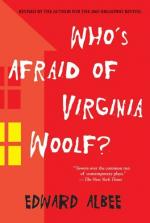|
This section contains 1,025 words (approx. 3 pages at 400 words per page) |

|
A good part of the reason Who's Afraid of Virginia Woolf? appeared so vibrantly new, so challenging, to theatergoers in 1962 is the novel and often surprising manner in which its author combined different theatrical styles and techniques. In particular, Albee straddled a divide between a predominantly naturalistic American playwriting tradition of social criticism, and what was beginning to be called the "Theater of the Absurd" (Martin Esslin published a landmark study with that same title in 1961). Philosophically almost all of Albee's dramatic writing is aligned with the absurdist idea that human existence is essentially pointless. In describing Albee's mature work, traditional terms such as realism, surrealism, expressionism, absurdism, and naturalism have limited value (especially given that terms like absurdism and expressionism have often been removed from their historically specific context and expanded to mean essentially any form of modern theatre that does not appear realistic).
The divergent aspects...
|
This section contains 1,025 words (approx. 3 pages at 400 words per page) |

|




